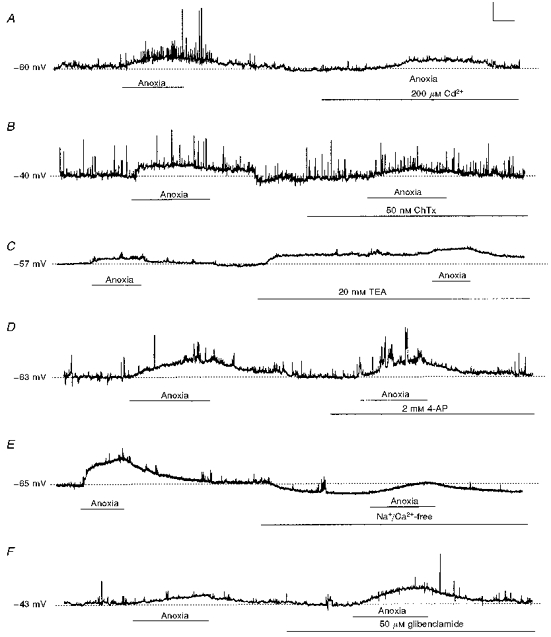Figure 7. Effects of anoxia and manipulation of the extracellular fluid on membrane potential of neonatal AMC.

Recordings under current clamp were obtained in the continuous presence of TTX (0.5–1 μm). A, anoxia depolarized AMC, though addition of Cd2+ alone did not; further, Cd2+ did not prevent the anoxia-induced depolarization, but abolished spike activity (compare right with left portions of trace). B, direct blockade of BK currents with 50 nm ChTx did not significantly alter membrane potential, nor prevent the anoxia-induced depolarization (compare left and right portions of trace). C, addition of TEA (20 mm) caused a slight membrane depolarization (right portion of trace), but did not block the anoxia-induced depolarization. D, addition of 4-AP did not depolarize nor prevent anoxia-induced depolarization of neonatal AMC. E, effects of perfusion with a Na+/Ca2+-free (NMDG+ was substituted for Na+; Ca2+ was replaced with 2 mm Mg2+ and 1 mm EGTA) bathing solution. Exposure to this solution hyperpolarized AMC and reduced, but did not block, the anoxia-induced depolarization. F, blockade of KATP channels with 50 μm glibenclamide did not affect resting membrane potential, nor did it prevent the anoxia-induced depolarization. However, in the presence of glibenclamide the anoxia-induced depolarization was significantly (P < 0.05) enhanced. Vertical scale bars represent 20 mV in A-E and 15 mV in F; horizontal bar represents 25 s.
